Children’s Hospital of Wisconsin (CHW)
Improving Children’s Health in Wisconsin through Schools and Communities
Connection to Moving Health Care Upstream
Children’s Hospital of Wisconsin (CHW) serves as the anchor for the team of Milwaukee, Wisconsin organizations working with the MHCU Improvement Network. CHW has also participated in MHCU’s Financial Sustainability workgroup.
For decades, CHW has provided upstream, prevention-based health resources in schools and communities across the state of Wisconsin. Within the past five years, CHW has concentrated its efforts on working with the community to identify common goals, integrate resources, and ultimately promote better health outcomes for children.
Our Community & Our Need
Though the Moving Health Care Upstream (MHCU) team is committed to working throughout the state of Wisconsin, it is currently focusing certain resources in three neighborhoods within Milwaukee, Wisconsin: Metcalfe Park, Amani & Franklin Heights, and Lindsay Heights. These neighborhoods are densely populated, with 44% of the population living in poverty, in contrast with 21% of the population in Milwaukee and 19% of the population in the state of Wisconsin. In these three neighborhoods, 42% of the population is under 18 years old, compared with 28% of the population in Milwaukee; twelve percent of babies have low birth weight compared with 9.9% in Milwaukee; and the infant death rate is 12.5 out of every 1000 births, compared with 9.6 out of every 1000 births in Milwaukee. The prevalence of asthma in the three neighborhoods (13%) is similar to that in Milwaukee (12%), while the prevalence of asthma in the state of Wisconsin is 7.6%. In addition, only 54% of caregivers in these neighborhoods have graduated from high school, versus 75% of caregivers in Milwaukee. Only 29% of properties in these neighborhoods are owned by their occupants compared with 62% in Milwaukee, 22% of properties have an open violation compared with 8% in Milwaukee, and 20% of properties are vacant compared with 4% in Milwaukee. ¹
Our Solutions
The MHCU team in Wisconsin utilizes the Whole School, Whole Community, Whole Child model (Whole Child model) that “focuses its attention on the child, emphasizes a school-wide approach, and acknowledges learning, health, and the school as being a part and reflection of the local community.” ² Drawing guidance from this model, the MHCU team provides training, support, and resources to the community.
Specifically in the three Milwaukee neighborhoods described above, the MHCU team is engaging the communities and providing training to implement the Whole Child model. Throughout the state of Wisconsin, the MHCU team also provides a suite of e-learning programs for students in kindergarten through 8th grade, which address topics such as preventing bullying; alcohol, tobacco, and other drugs; health and wellness; and safety and injury prevention. In addition, the MHCU team leads various community coalitions that develop interventions to improve public health and reduce injuries. All of these efforts are aimed at building sustainable resources and improved health outcomes for children and their families in Wisconsin.
Our Community Partners
Community partners for our work with Moving Health Care Upstream include community organizations, schools, state agencies, health departments, health systems, and nonprofits. Through community meetings, events, and surveys, we engage these community partners, as well as community residents, in providing feedback about needs in the community and strategies for intervention and improved health outcomes.
For More Information
If you would like more information about the upstream work happening in our community please contact Katie Horrigan at [email protected] and/or check out the following online resources:
Chw.org
Healthykidslearnmore.com
Safekidswi.org
Parentsactnow.com
Crossroadsteendriving.org
¹Data for the statistics in this paragraph were obtained from Community Mapping and Analysis for Safety Strategies (COMPASS); Census Bureau; WI Department of Health Services; and Milwaukee public health. These sources also show that in contrast to Milwaukee and the three neighborhoods receiving focus from the MHCU team, in the state of Wisconsin, 7.1% of babies have low birth weight, the infant death rate is 5.1 out of every 1000 births, and 90% of caregivers graduated from high school.
²Whole School, Whole Community, Whole Child, Centers for Disease Control and Prevention, http://www.cdc.gov/healthyyouth/wscc/ (last accessed Sept. 6, 2016).
